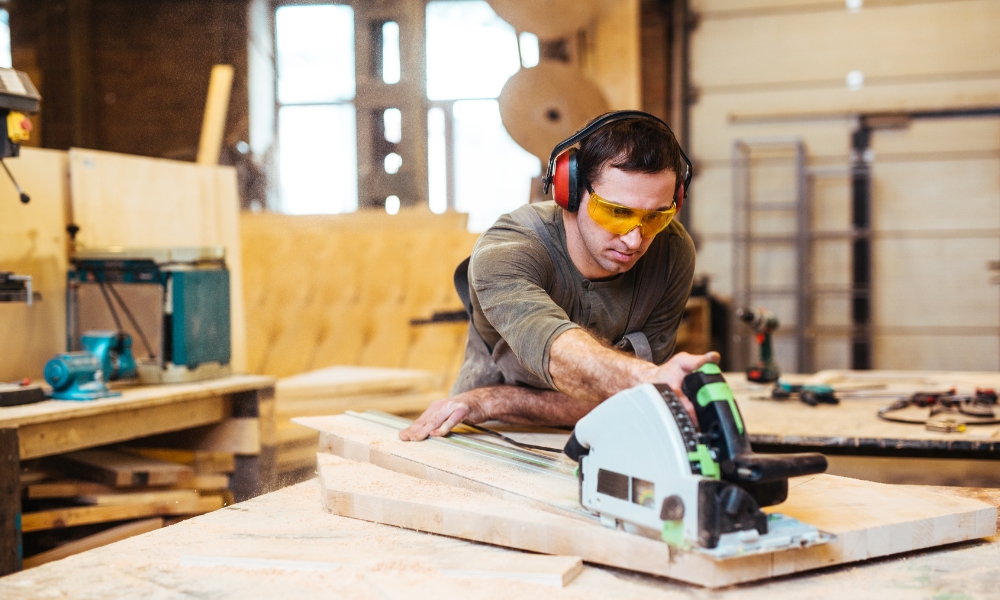
Power saws are essential tools for DIYers, contractors, and woodworking enthusiasts. Whether you're tackling a home renovation, building furniture, or cutting materials for a project, selecting the right saw can make all the difference. With so many options available, it’s crucial to understand the strengths and purposes of each type before making a purchase.
Not all saws are created equal. Each type is designed for specific tasks, materials, and levels of precision. Knowing which one suits your needs will help you avoid costly mistakes and unnecessary frustration. If you're ready to explore high-quality options, check out these saws for a range of reliable choices.
A circular saw is a go-to tool for straight cuts in wood, metal, and plastic. Its portability makes it a great choice for projects requiring mobility and flexibility. Circular saws come in corded and cordless models, with various blade sizes and cutting depths. If you need a saw that can handle everything from framing to simple sheet cutting, this might be your best bet.
When accuracy is a priority, a miter saw is the tool to use. Ideal for molding, trim work, and framing, this saw excels at making precise angled cuts. Compound miter saws allow for beveled cuts, while sliding miter saws provide extended reach for wider boards. If you're working on crown molding or picture frames, investing in a high-quality miter saw will save you time and effort.
A table saw is a staple in workshops, offering unmatched precision for ripping large sheets of wood or cutting materials to exact specifications. It consists of a circular blade mounted on an adjustable table, making it ideal for cabinetry, furniture making, and large-scale construction projects. Table saws take up more space and are less portable, but their power and accuracy make them indispensable for professional use.
For cutting curves, patterns, and intricate designs, a jigsaw is an excellent tool. This handheld saw moves in an up-and-down motion, allowing for greater control when working on detailed projects. It's perfect for cutting plywood, laminate, and even metal. Woodworkers and craft enthusiasts often rely on jigsaws for creative and decorative cuts.
When it comes to tearing down structures, cutting through nails, and handling rough materials, a reciprocating saw is unmatched. Often used in demolition work, this saw features a push-and-pull blade motion that can cut through wood, metal, and even masonry. While it lacks precision, it excels in power and versatility.
A band saw is a stationary tool that uses a continuous looped blade to make smooth, curved, or resaw cuts. It's widely used in woodworking and metalworking for tasks requiring finesse and control. If you need to cut irregular shapes or create veneers, a band saw is worth considering.
The type of material you’re cutting plays a significant role in your choice. If you're working primarily with wood, a circular saw or table saw might be ideal. For metal or PVC, a reciprocating saw or jigsaw could be a better fit. Assess whether you need straight cuts, curves, or angled precision to determine the right tool.
If you're frequently moving between job sites, portability is key. Circular saws, reciprocating saws, and jigsaws offer the convenience of mobility. On the other hand, stationary saws like table saws and band saws require dedicated space in a workshop. Consider how much room you have before investing in a larger saw.
Corded saws provide unlimited power and are often more powerful, making them ideal for extended use. However, cordless saws offer convenience and flexibility, especially for projects in areas without easy access to power outlets. Battery technology has improved significantly, making cordless options a viable alternative for many users.
Safety should always be a priority when choosing a power saw. Look for features such as blade guards, electric brakes, and ergonomic handles to enhance control and reduce the risk of accidents. If you're a beginner, selecting a saw with intuitive controls and clear safety mechanisms will help you operate it with confidence.
While it's tempting to go for the cheapest option, investing in a high-quality saw can save you money in the long run. Durability, warranty, and performance should factor into your decision. If you plan to use the saw frequently, opting for a reliable brand with strong customer support is a smart move.